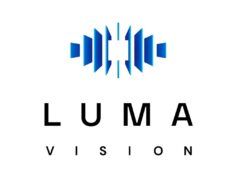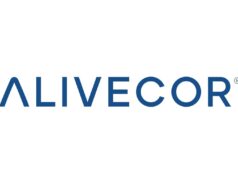Ahead of the American Heart Association’s 2021 annual scientific sessions (AHA 2021, 13–15 November, virtual), Cardiac Rhythm News speaks to the meeting’s programme committee chair Manesh Patel (Duke University School of Medicine, Durham, USA) about some of the highlights from the meetings three days of broadcasting, the format of the event, and the development of digital learning during the pandemic.
What can attendees expect from AHA 2021?
Our hope is to get expert opinion and context, and viewers can bring it back to their practice so that it turns into clinical care. The theme for the AHA meeting this year is ‘one world together for science’. This will centre on thinking about working our way out of a pandemic and using science in a variety of ways in cardiovascular disease, which is still the lead cause of morbidity and mortality worldwide.
This year’s meeting has seven late-breaking science sessions over almost 150 submissions, and they have been organised thematically including cardiothoracic surgery, global hypertension management, prevention lipids, atrial arrhythmias, what I will call ‘information and data overload, and how do we use it’, heart failure therapies, and some new drug indications. It is a pretty broad spectrum of things that I think people will care about across cardiovascular disease.
Which studies from the late-breaking sessions do you recommend watching out for?
Highlights include the first late-breaking session, which has a trial called AVATAR, aortic valve replacement versus watchful waiting in asymptomatic severe aortic stenosis patients. We think that is going to be important and probably affect guidelines in clinical care across the country. It is hard to randomise people waiting for surgery, so that first session with four cardiothoracic surgery studies we think will be important.
The second late-breaking science session has other important management issues around blood pressure, there is a Chinese study, a cluster randomised trial of doctor-led interventions in 326 villages, involving maybe 33,000 people and getting closer to home to care for these patients.
In the USA there is a 10,000-patient study on the partner’s healthcare or mobile technologies, nurse-led, pharmacy-led, a variety of interventions to manage cholesterol and blood pressure. And finally, a study looking at the impacts of COVID-19 on blood pressure. That is another large late-breaking session that I think will be important.
The third late-breaking session, which is focused on atrial arrhythmias, has a lot of studies. I think you will get a lot of people wanting to understand the CRAVE study, a study about caffeine where mobile technology is used to track activity and cardiac dysrhythmia in patients in real time. Other studies in that session include another surgical study looking at posterior left pericardiotomy reducing postoperative atrial fibrillation—called PALACS—and a study called AMAZE, an adjunctive left atrial Appendage ligation at the time of pulmonary vein isolation, so a lot of real world interesting issues around AF.
The fourth late-breaking session is called “Information Overload and Digital Health” and with the explosion of wearables, mobile tech, and even just algorithms, it considers how we take care of our patients. The first trial, REVEAL HF is a randomised trial about prognosis in heart failure—does providing the prognosis of patients when you are seeing them change how physicians take care of them in real time?
Then there is the 45,000-patient FITBIT Heart study. A little like the Apple Watch Study, it delves into understanding how good are these devices, or at least how specific are they when they see an abnormal rhythm.
The fifth late-breaking session is in the world of heart failure, looking at how it is changing, specifically with SGLT2 inhibitors. The EMPULSE study goes with the EMPEROR PRESERVED study, looking at empagliflozin and addressing the efficacy and safety in hospitalised patients. Then we have an analysis out of EMPEROR PRESERVED, but also CHIEF HF (The Canagliflozin Impact On Health Status, Quality Of Life And Functional Status In Heart Failure) which is another important clinical study.
Late-breaking session six has a study on fish oil—PREPARE-IT 2—looking at icosapent ethyl and COVID-19 outcomes in outpatients before they are admitted. On the final day we have a seventh late-breaking session that has a lot of new therapeutics, or old therapeutics used in new ways. There is REVERSE-IT, looking at the effect of bentracimab on platelet inhibition and haemostasis in ticagrelor patients with uncontrolled haemorrhage or requiring urgent surgery, and aspirin for cognitive dysfunction, so a really broad set of science.
Beyond the late-breakers, we have the ‘one world together for science’ theme and we have sessions that I think are really important. The opening session on Saturday is called “Scientific Discovery as a Guiding Light: Moving towards a Post-COVID World”. In that session we have Gary Gibbons (director of the National Heart Lung and Blood Institute) talking about how we can galvanise research.
We have a panel that includes a pretty star-studded group of people talking about how we get to the diverse patients and develop the future generation of the workforce that is going to do research and get answers faster for cardiovascular disease. If we learnt to bend the curve for COVID-19 how do we learn to bend the curve for cardiovascular disease, and what can we do to have that same urgency? Those are going to be really important points.
We also have a large set of sessions on health equity and we have a Sunday highlight with some patient vignettes where we will talk about the current realities of how we are delivering healthcare.
There is a COVID-19 vaccine development session with Nancy Brown the CEO of the AHA, with leaders from Moderna and Pfizer, but also with a panel thinking about what lessons we have learned and how do we translate these to cardiovascular therapies.
The digital meeting format is now well established, have there been any components that you have tailored for AHA 2021?
It is amazing how quickly we have shifted. In 2019 when we did the AHA Scientific Sessions we were in Philadelphia, we had booths with petting puppies, we had Hamilton at the AHA, we had quite an event, we were really excited about it. We feel equally excited about the event we are going to have now, but what we have pivoted to is understanding that people are going to want several things. There is the value of democratising the information by putting it virtually on-demand anywhere around the world, so that anyone who was not able to get to these meetings is going to be able to get to it. I do not think we are going to go back, we will likely have very important hybrid versions in the future.
We really all look forward to getting together to get that interaction with people that we all look for, but this year what we see is that we are increasing the ways in which people can interact by having more live-streamed channels. People like to tune in to on-demand or event TV, if they know a session is coming at a particular time and they can see it with interaction with the host and they can ask the moderator or the speaker—we have increased that ability. Additionally we have increased the on-demand ability so people can watch, see the science, post comments and get feedback and that is available all the time, wherever you are in the world. Those things are getting better and we are learning from other industries how to do it better.
How does the digital format impact on the make-up of the audience and, thinking specifically about physicians in the earlier stage of their career, how does the format change the way they interact with the content?
We are torn on this. We at the AHA, and I am sure it is the same for a lot of societies, really value the young career members because they are the future of all of our societies in healthcare. What we have seen that the young career members really value being able to come and present science because there is a way for them to go and meet people, get a trip and meet and identify people. We do believe there are some component of young career members that are losing that, they are going to come back as we get to in person. However, what the virtual format has taught us is that there is a world of young career professionals who never had the opportunity to get to these meetings, and they are now interacting digitally by either submitting cases or content because they can be online or have their science presented online without having the financial burden of getting somewhere to do it.
The second thing is that there is something about the ability to post a chat comment without having to raise your hand in a meeting, that young colleagues, or even some older colleagues, are feeling comfortable about. I think what we have identified is that, in a respectful way, we want to have a broad dialogue with everyone, and we have added social media moderators, we have the chat board function, and we have seen broader uptake in that. We are also seeing a different demographic that is accessing the on-demand in different ways and so we are excited about that.












